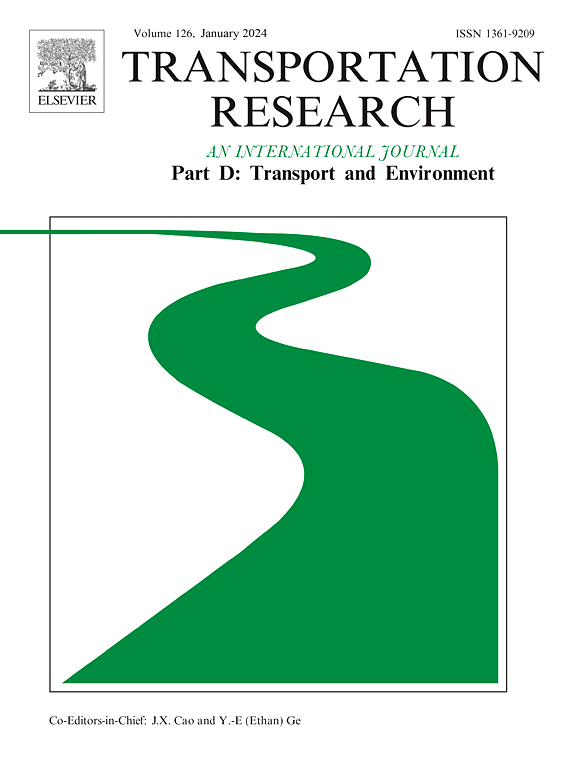Demographic disparity and influences in electric vehicle adoption: A Florida case study
IF 7.3
1区 工程技术
Q1 ENVIRONMENTAL STUDIES
Transportation Research Part D-transport and Environment
Pub Date : 2024-10-14
DOI:10.1016/j.trd.2024.104465
引用次数: 0
Abstract
The mass adoption of electric vehicles (EVs) remains an emerging goal despite existing barriers. Equity issues widely exist, but previous studies have mainly focused on purchase incentives and charging infrastructure. This study employs multinomial logistic mixed (MLM) and generalized linear mixed models (GLMM) to analyze the probability of owning an EV and the willingness to purchase an EV in Florida, respectively. Our analysis indicates significant demographic disparities, with older individuals and females less likely to own Tesla EVs, while Black and Hispanic individuals prefer non-Tesla EVs; social networks and awareness of climate change are crucial in influencing the willingness to adopt EVs. Policy implications drawn from our findings suggest the need for targeted marketing and financial incentives to address demographic disparities, the expansion of social network influence to drive adoption, and increased awareness and accessibility of EV-related policies and infrastructure to promote a more equitable transition to electric mobility.
采用电动汽车的人口差异和影响因素:佛罗里达州案例研究
尽管存在各种障碍,但大规模采用电动汽车(EV)仍是一个新兴目标。公平问题普遍存在,但以往的研究主要集中在购买激励措施和充电基础设施方面。本研究采用多叉逻辑混合模型(MLM)和广义线性混合模型(GLMM)分别分析了佛罗里达州拥有电动汽车的概率和购买电动汽车的意愿。我们的分析表明,人口结构存在明显差异,老年人和女性不太可能拥有特斯拉电动汽车,而黑人和西班牙裔人则更喜欢非特斯拉电动汽车;社会网络和气候变化意识对采用电动汽车的意愿有着至关重要的影响。从我们的研究结果中得出的政策含义表明,需要有针对性的营销和经济激励措施来解决人口差异问题,扩大社交网络的影响力以推动电动汽车的采用,并提高对电动汽车相关政策和基础设施的认识和可及性,以促进向电动交通更公平的过渡。
本文章由计算机程序翻译,如有差异,请以英文原文为准。
求助全文
约1分钟内获得全文
求助全文
来源期刊
CiteScore
14.40
自引率
9.20%
发文量
314
审稿时长
39 days
期刊介绍:
Transportation Research Part D: Transport and Environment focuses on original research exploring the environmental impacts of transportation, policy responses to these impacts, and their implications for transportation system design, planning, and management. The journal comprehensively covers the interaction between transportation and the environment, ranging from local effects on specific geographical areas to global implications such as natural resource depletion and atmospheric pollution.
We welcome research papers across all transportation modes, including maritime, air, and land transportation, assessing their environmental impacts broadly. Papers addressing both mobile aspects and transportation infrastructure are considered. The journal prioritizes empirical findings and policy responses of regulatory, planning, technical, or fiscal nature. Articles are policy-driven, accessible, and applicable to readers from diverse disciplines, emphasizing relevance and practicality. We encourage interdisciplinary submissions and welcome contributions from economically developing and advanced countries alike, reflecting our international orientation.

 求助内容:
求助内容: 应助结果提醒方式:
应助结果提醒方式:


